Machu Picchu may be the first thing that springs to mind when you think about Peru but there is so much more to this beautiful country than Inca ruins. World-class cuisine, enigmatic geoglyphs and the world’s largest alpaca population make Peru the perfect destination for an adventure! From the cost of backpacking around the country to the visa requirements and the best things to do, our guide will tell you everything you need to know to plan your trip!
Also See Our Peru Travel Guides (Listed A-Z) – Each guide will open in a new window
Arequipa | Chachapoyas | Chiclayo | Cusco | Huacachina | Huaraz | Lima | Machu Picchu | Máncora | Nasca | Ollantaytambo | Paracas | Puno | Trujillo
Contents
INTRODUCTION | Backpacking Peru



- Currency: Nuevo Sol
- Capital city: Lima
- Population: 32.5 million
- Main religion: Roman Catholic
- Main language: Spanish
- Telephone code: +51
- Time: GMT – 5 hours
- Emergency numbers: Ambulance: 117 Fire: 116 Police: 105
You’ll love Peru if…
- You are a foodie. Peru’s capital Lima is home to two of the World’s 50 Best Restaurants!
- You’re looking for world-class trekking opportunities. Lush cloud forests, alpine peaks and sweeping canyons await.
- You love history and culture. Cusco is the archaeological capital of South America and famous Inca ruins are just a stone’s throw away.
- You want to brush up on your Spanish skills. Peruvians speak slowly and clearly, making this a great place to learn Spanish.
- You want to visit a country that has it all! Scenery, wildlife, history and culture… there is something for everyone.
Check out these amazing facts about Peru!
WHEN TO GO | What is the best time of year to visit Peru?



Peru is a great country to visit any time of the year. Owing to its proximity to the equator, it benefits from two seasons: the rainy wet season (summer) and the dry season (winter).
The best time to travel is during the dry season, between May to September, especially if you’re planning on trekking to Machu Picchu or in the Cordillera Blanca. This is also a great time to explore the Peruvian Amazon as there are generally fewer mosquitos.
It’s warmer in the summer season, between December and March, but there’s more rainfall then, making some activities quite dangerous. During the rainy season, transport may be delayed or disrupted. It is also possible that some of the popular hiking trails will close at short notice, owing to the bad weather.
Good to know: It is not possible to do the Inca Trail in February as the route is closed for maintenance.
Read more about the best time to visit South America.
VISAS | Do I need a visa for Peru?


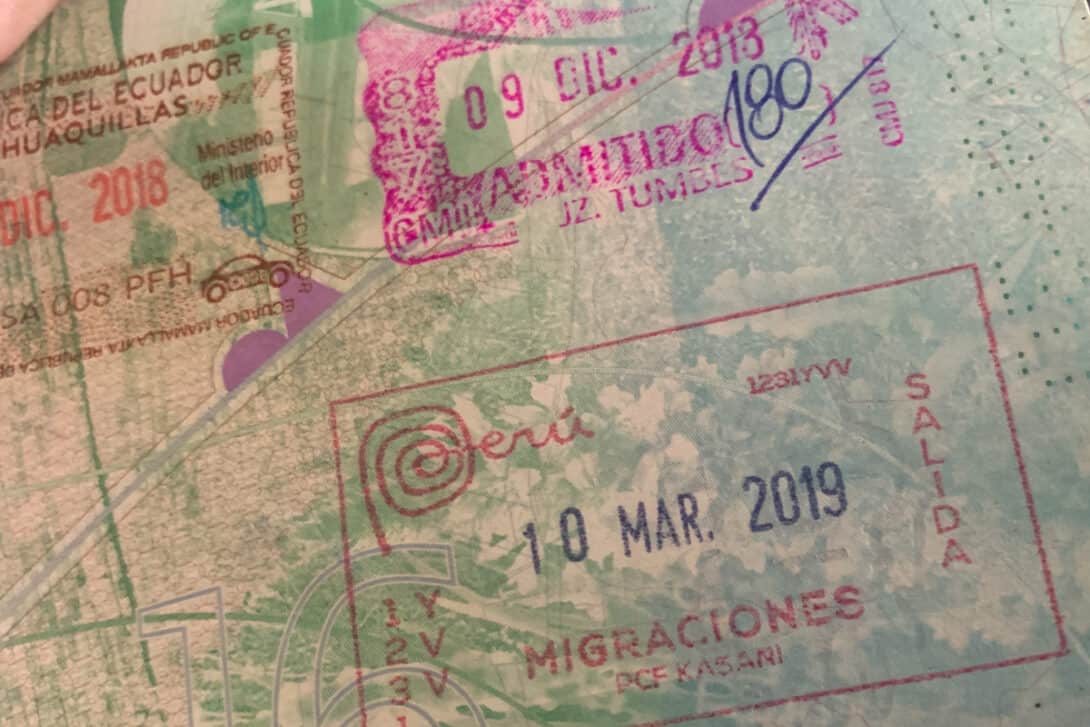
90 Days Visa-Free
Many nationalities do not require a visa to enter Peru. They include (but are not limited to), those from Canada, Australia, the United States, the United Kingdom and many parts of Europe.
Upon arrival, you will usually be granted permission to stay for up to 90 days. However, your stamp may only allow you 30 or 45 days. It is based on the discretion of the immigration officer. If you plan to be in Peru for longer, you can request the 90-day stamp. The maximum time you’ll be permitted on entry to Peru is 183 days but this is not always given and most travellers will need to apply for an extension after 90 days.
To check visa requirements and see if you need one, have a look at the Peruvian government website here (in Spanish). If you do, you can get up to 183 days on a single entry visa.
Visa Extensions
If you want to extend your stay in Peru, you can do this online or at Migraciones in person. You will need to fulfil the current criteria:
- Your current entry stamp must be valid
- You must have spent less than 183 days in the country within the last year
- Your passport must be valid until the end of the period you are applying for
- You have paid the fee to the Banco de la Nación and have a receipt to prove it
Border Runs
Previously, it was possible to extend your stay in Peru by doing a visa run to a neighbouring country. However, since the introduction of the 183-day rule in 2018, this is no longer allowed. The only way to extend your stay in Peru is to go through the official channels. You will not be able to stay longer if you have already been in the country for 183 days in the last year.
Penalty for overstaying your visa in Peru
If you overstay your permitted time in Peru, you will be required to pay a fine in most cases. However, there have been instances of foreign nationals being held in detention for overstaying their visa. Yikes!
Read more about Peru visa requirements and other visa requirements for South America here.
HEALTH | Vaccines and Malaria Tablets

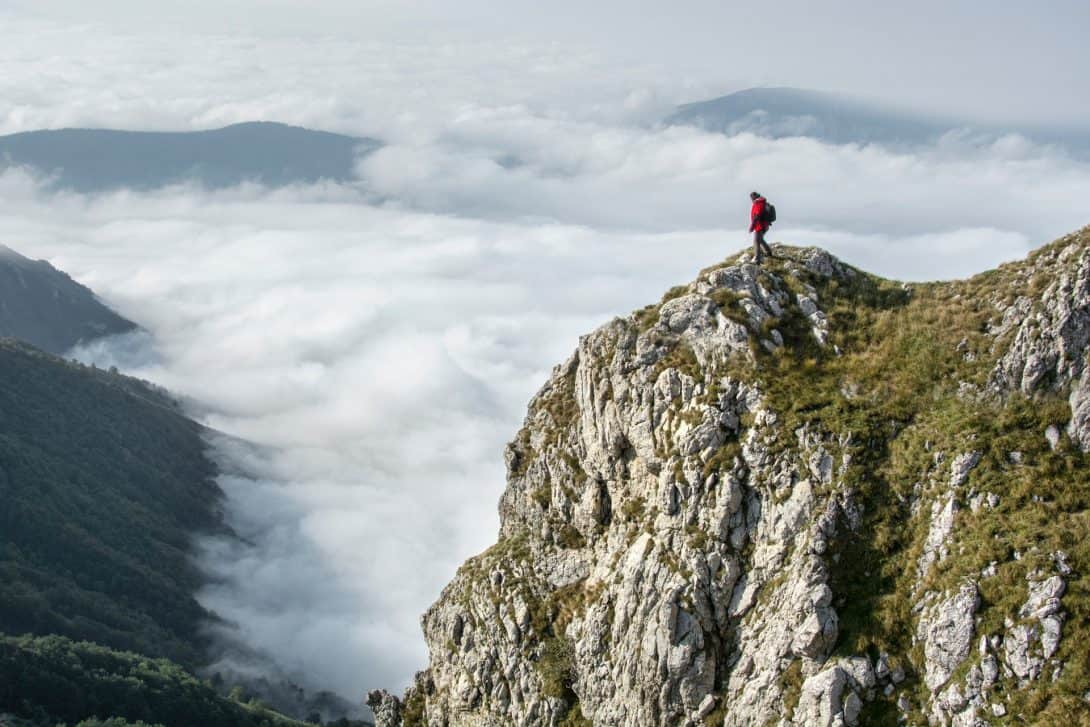

Do I need vaccines to travel to Peru?
Disclaimer: You should always seek professional medical advice before travelling.
According to Fit for Travel, it is recommended but not mandatory to have the following vaccinations for Peru:
- Yellow Fever (not required for entry)
- Typhoid
- Tetanus
- Diphtheria
- Hepatitis A
- Hepatitis B
- Rabies
There are many risks for travellers in Peru that cannot be avoided with prior vaccinations. The main one is diarrhoea, caused by organisms spread by faecal contamination when preparing food. Make sure that your hands are always clean before eating. Unfortunately, you can’t do the same for whoever is preparing your food!
Read in more detail about vaccinations for South America here.
Do I need malaria tablets for Peru?
You should discuss taking malaria tablets with your doctor if you’re going to be in the jungle, or travelling below 2,000m. There is a malaria risk in some areas but many doctors will only advise that the most high-risk travellers take medication. At altitude, there is no threat of malaria which means popular destinations including Cusco, Machu Picchu, Lake Titicaca and the Inca Trail are fine.
Dengue Fever
Malaria is not the only mosquito-borne disease in Peru. Dengue fever is also transmitted by mosquito bites so all travellers are encouraged to practice bite avoidance. For example, use a DEET based repellent and sleep under a mosquito net when possible.
Altitude
Much of Peru is located at either high (2,400 m.a.s.l.) or extremely high (3,658 m.a.s.l.) altitudes. Before visiting, you should speak with your doctor about looking after yourself in these conditions. We recommend always taking the time to acclimatise in an area and staying hydrated. For information regarding altitude sickness medication, speak to a health professional.
Disclaimer: We always advise visiting a travel medical clinic prior to travelling to Peru for the latest health information.
SAFETY | Is Peru Safe?
Peru is generally a safe country for travellers and has made it into our list of safest South American countries as determined by the Global Peace Index. However, like everywhere in South America, you should be cautious, alert, and not take any unnecessary risks.
Also read our article – Is South America safe?
BEWARE! Street dogs run rampant in Peru (even hairless ones!). Most often these pesky guys are more bark than bite, but it’s never a bad idea to threaten clingers with a rock if you are unsure.
Crime in Peru
Violent attacks are rare, but you should be on your guard for pickpocketing above all. As you would expect, the biggest risk comes in large cities. We don’t recommend walking around Lima or Cusco on your own at night. The reception of your hotel or hostel will advise you of any unsafe areas, which you’ll be able to avoid.
Make sure you’re clued up on the latest South American scams as some of these are executed on unsuspecting travellers in Peru.
Roads in Peru
Much like in many other South American countries, Peru’s roads can be pretty terrible. Congestion is commonplace and signage is confusing at best. In some parts of the country, the mountain tracks can be very sketchy, with sheer drops. As such, we wouldn’t recommend driving in the country unless you are very confident!
If you are travelling during the rainy season, it is important to be flexible with your plans. Public transport may be delayed or cancelled owing to bad weather. Landslides, avalanches and flooding are all common in the wet season.
Natural Disasters in Peru
Owing to its location on the Ring of Fire, Peru is susceptible to volcanic activity and earthquakes. In fact, it is estimated that there are as many as 200 small quakes every single year! Flooding and landslides also pose problems, particularly during the rainy season.
Food and Water Hygiene in Peru
Let’s be real, trying the food is half the appeal of visiting Peru. And luckily for backpackers, you don’t need to spend big dollars in the most swanky restaurants to enjoy this cuisine (although we’re pretty sure you won’t regret it if you do)!
Peru’s street food is the result of a colourful fusion of cultures, with everything from Japanese to Spanish influence. Eating on the street is quick, cheap and hygiene standards are generally pretty decent too.
However, we recommend always sticking to restaurants and stalls which have a high turnover of diners. This will ensure the food is fresh.
If you’re interested in trying Peru’s national dish ceviche (which you definitely should), make sure to order it in a coastal area. Ceviche is made up of uncooked fish so the fresher the better when it comes to your stomach!
Tap Water in Peru
You should not drink tap water in Peru. Avoid eating things that have been washed in tap water and definitely refuse ice cubes in your cocktails, it isn’t worth the risk.
To limit your plastic footprint, consider investing in a filter water bottle such as the Grayl Geopress. This will allow you to purify water, making it safe to drink and also save you cash on single-use water bottles!
Drugs in Peru
In our opinion, taking any kind of drug in South America just isn’t worth the risk. Peruvian drug laws are a bit of a grey area and the police still treat possession as a crime, even if you have less than the required amounts punishable by law. For drug-related offences, the police detention period could be up to 15 days, plus extra if you are suspected of trafficking.
Much like other Andean countries, coca is perfectly legal to use and buy. It is commonly used to mitigate the symptoms of altitude. You can chew the leaves, drink coca tea or even buy coca sweets!
Ayahuasca is likely to be the drug that you hear most about in Peru. This hallucinogenic is perfectly legal in the country (although not in the USA and Europe) and has been used in ancient indigenous rituals for years.
Be aware that drinking ayahuasca is not simply another bucket list experience to tick off. This drug is very potent and can have life-changing effects. The same can be said about the hallucinogenic San Pedro too.
10 Top Safety Tips for Peru
- Keep your belongings close and try to avoid having expensive valuables on show. Keep jewellery and designer clothing to a minimum.
- Make copies of your passport and other important documents.
- Don’t carry large amounts of money. Keep cash and your documents in a money belt on your person.
- Watch out for muggings, in particular, ’strangle muggings’, and express kidnapping. These are rare, but most commonly happen to travellers who are alone on dark streets in bigger cities such as Lima, Cusco, and Arequipa.
- Allow yourself time to acclimatise before taking on any physical challenges.
- If you are travelling with your laptop or expensive camera equipment, consider investing in a theft-proof backpack.
- Choose a reputable bus company, especially if you are travelling at night.
- Master the basic lingo in Spanish. The less you look like a tourist, the more likely you are to have a trouble-free trip.
- ATM fraud is a problem across Peru. It is always advisable to withdraw money from cashpoints during daylight hours and try to avoid doing this in sketchy parts of town.
- 10.Don’t let South America’s dangerous reputation stop you from enjoying your trip. Exercise the right amount of caution, but don’t be too afraid!
TRAVEL INSURANCE | Travel Insurance for Peru.
It goes without saying to take out a good travel insurance policy before you travel here (or anywhere) to cover your possessions and any sicknesses or illnesses that might occur.
Our readers commonly recommend World Nomads and SafetyWing, both of which specifically cater to adventurous travellers and backpackers. Both these insurance policies are flexible, meaning that you can buy while you’re already travelling, or extend while you’re away.
WHAT TO PACK | What should I pack for a trip to Peru?


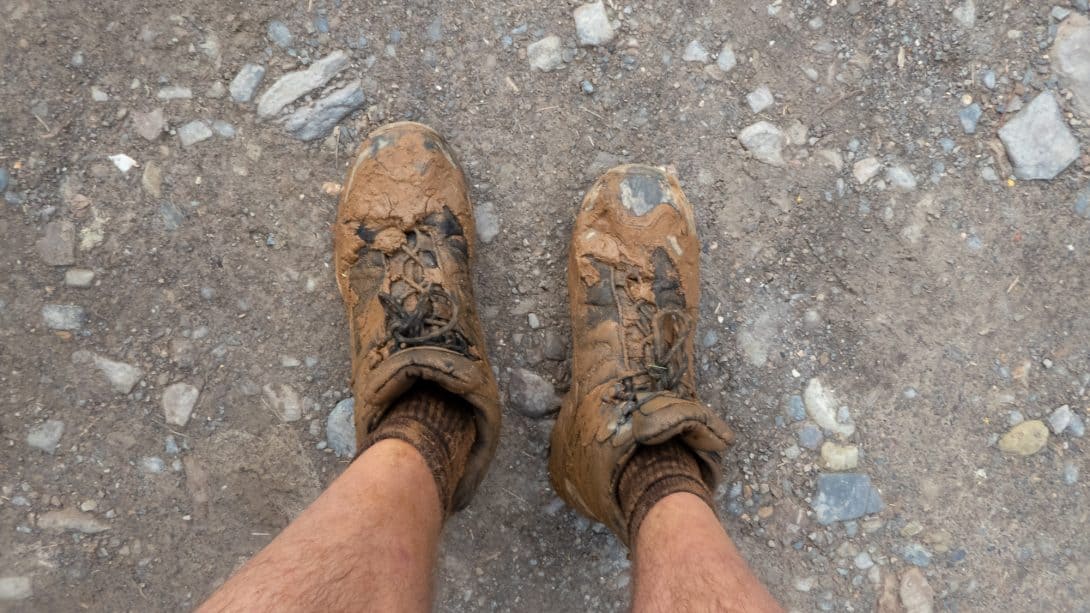
Clothes for Peru:
- Rain jacket: Even if you are not travelling during the rainy season, Peru’s weather can be unpredictable, especially at altitude.
- Shorts: Great for hot and humid conditions like in the Amazon.
- Long trousers or leggings: Ideal for hiking and keeping the sun off your legs.
- T-shirts: Cotton and linen are both great because they are cool and easy to layer up.
- Fleece or light jumper: For altitude hikes or chilly evenings in Cusco!
Footwear for Peru:
- Hiking boots: If you are planning on taking on any of the hikes in Peru, you’ll need sturdy shoes which can handle rough terrain. Make sure these are broken in first.
- Trainers or walking sandals: Ideal for everyday exploration.
Practical Items:
- Sunglasses: Great for hikes at altitude – glaciers can be very bright!
- Sunscreen: Even though the Andean regions of Peru get cold, you can still burn at altitude.
- Insect repellent: You will need this if you are visiting the Amazon region.
- Microfibre towel: These towels are lightweight and quick-dry, making them ideal for backpackers.
- Universal Travel Adaptor: Ideally, this will have a few USB ports so you can charge a few electronics at the same time.
- Filter water bottle: We recommend the Grayl Geopress. It is a big investment but it will save you money in the long run (and the planet will love you)! We recommend using it alongside a collapsible bottle when you hike so you can carry more water on your person.
- Spanish phrasebook: It definitely helps to learn the local lingo.
- Copies of your passport: Just in case!
FLIGHTS | Airports and airlines in Peru
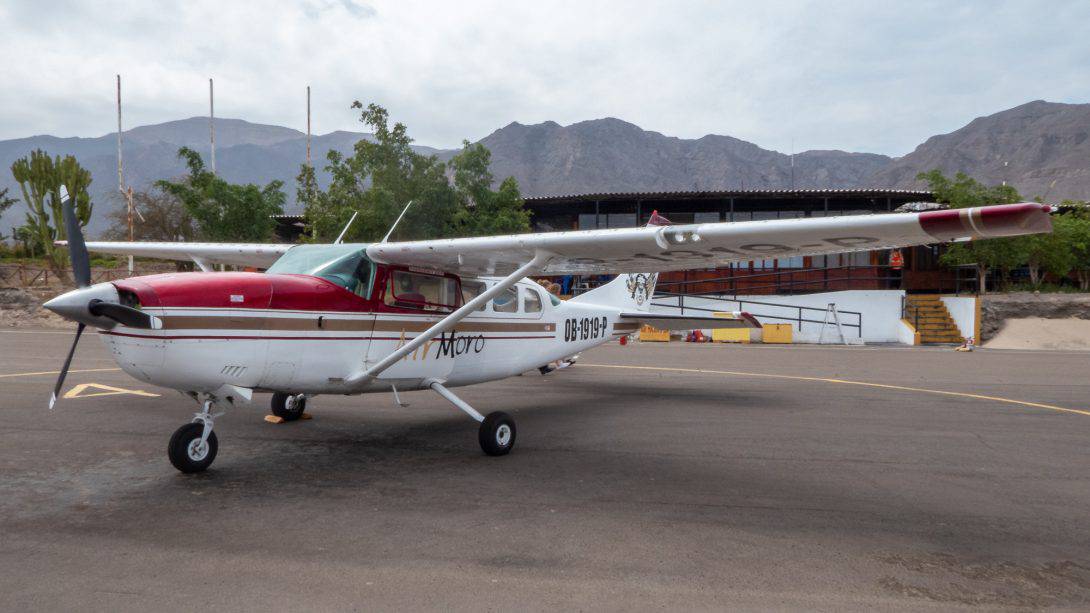


Flying to Peru:
Ticket prices vary for travellers heading to Peru at different times of the year but they are generally quite consistent. Try to avoid travelling during public holidays e.g. Christmas and Easter. The tourist high season is from May to October.
Direct flights go from certain European locations, including Amsterdam and Madrid. Some states in the US offer direct flights. The most popular airport to fly into is Aeropuerto Internacional Jorge Chávez in Callao, Lima. The second most popular airport for travellers is in Cusco.
Flying within Peru
For travellers strapped on time, flying domestically is an option. Star Peru, Avianca and LATAM are all popular airlines for domestic routes. Flights vary in cost but to give you an idea, you’ll pay anywhere from around 255soles (around $75USD) for a flight from Lima to Arequipa. In peak season, prices will rise.
LANGUAGE | Peru’s Official Languages
There are three official languages in Peru; Spanish, Quechua, and Aymara.
Spanish is the most widely spoken of these and this is the language we recommend learning first. Along with Colombia and Ecuador, Peru is a very good country in which to invest in a few language lessons. The Peruvians tend to speak quite slowly and clearly which can definitely help beginners!
If you want to sharpen your Spanish skills before you go, make sure you check out these Spanish movies on Netflix and familiarise yourself with the most used Peruvian words below.
Quechua is spoken mainly in the Highlands. It is known as the ‘language of the Incas’. Aymara is commonly spoken in the areas around the Bolivian border, close to Lake Titicaca.
COMMUNICATION | Phone & internet in Peru
If you plan on using your mobile in Peru, we advise picking up a local SIM. The main two network providers are Claro and Movistar. They provide the largest areas of coverage which is important when you are up in the mountains. When you’re running low on credit, you can easily top up the SIM anywhere it says ‘recarga’. The cost of a SIM card in Peru tends to be around 15soles (under $5USD).
BUDGET | How much does it cost to backpack in Peru?
Exchange Rate: Nuevo Sol to US dollar – 4 soles = $1USD Approx.
Once you get your head around the difference between soles and your home currency, it’s possible to travel very cheaply in Peru!
Also see: How much does it cost to backpack around South America?
Cost of Accommodation in Peru



Generally, accommodation is quite affordable in Peru and won’t set you back too much money. Cusco and Lima are the most expensive cities.
Hostels
Hostels are widely available in big cities, although in smaller towns you might have to book into a hotel instead. In most cities, you can get a dorm bed in a nice backpacker hostel for 25 to 35 soles ($6.50USD-$9USD). Peru is home to several popular backpacker hostel chains (Wild Rover, Loki, Kokopelli) which are ideal if you want a pumping social scene.
Hotels
Some high-end hotels may add as much as 28% to your bill as a service charge. A private room in a mid-range hotel is usually between 60 – 80 soles ($15USD-20USD). One of the things you should always check before committing to a room is if there are hot showers as this is not always a given!
Lodges
For stays in the jungle, consider staying in a jungle or eco-lodge. These tend to be more environmentally sustainable than other types of accommodation.
Camping
Peru is home to some stunning national parks and they offer a great place to camp. Before setting up your tent, make sure that you’re permitted to camp at your chosen site. Bring professional camping gear if you are planning on camping in the cordilleras – the temperatures can drop below freezing!
Cost of Food in Peru
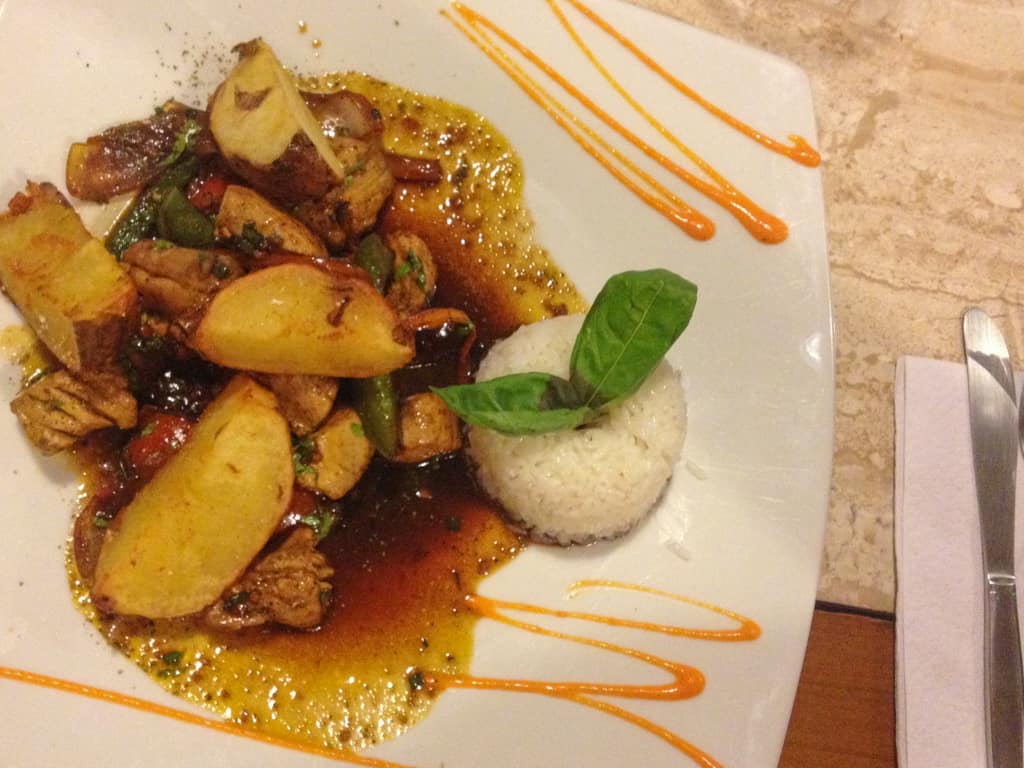


Many restaurants and markets offer almuerzo (lunch) for around 5 or 6 soles. ($1USD-$2USD). This will usually consist of a soup, a main course, and a drink. International food is generally more expensive.
In restaurants, it’s customary to add 10% to the bill if you’re happy with the service. Some ‘gringo’ restaurants will automatically add on this service charge. In smaller local restaurants, it’s customary to add 1 or 2 soles to the bill.
Cost of Beer in Peru
Each region in Peru has its own brand of beer. If you’re on a budget, it is advisable to drink the most local option, instead of splashing out on imported labels.
Cusqueña, Cristal, Pilsen Callao and Arequipeña are all popular Peruvian brands.
In a Peruvian bar, you buy beer in large bottles (around 650ml) to share with friends. A bottle tends to cost around 6 soles ($1.50USD), although this will be more expensive if you are in the more touristy parts of the country.
Bear in mind that if you are buying beer in a shop, you will be charged on top for the glass bottles which can be more costly than you would think! To counter this fee, always make sure you take your glass bottles back when you buy more.
Cost of Activities in Peru


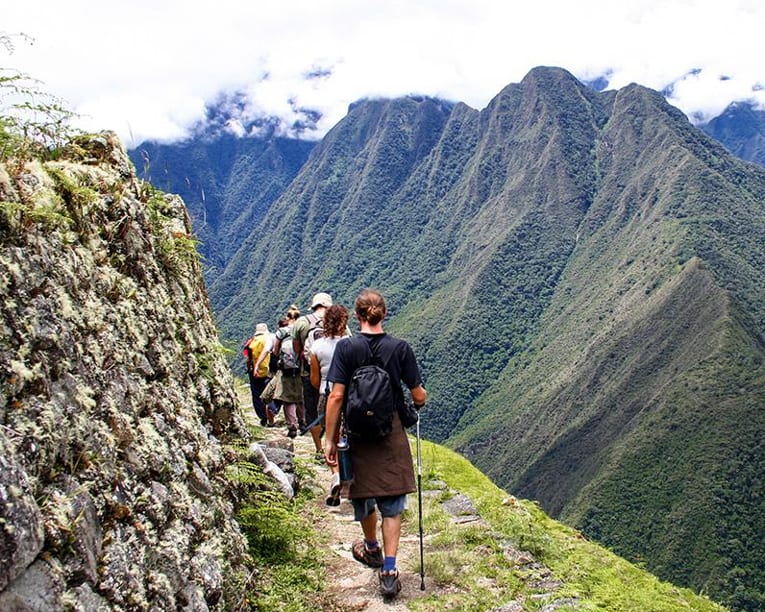
Tours in Peru are generally quite cheap which means you can afford to splash out more things like hikes, visiting ancient ruins, and doing just generally cool stuff.
Day tours are easy to arrange at short notice and reasonably priced. Usually included is the guide, transport, lunch, and entry fees to museums/sites on the tour.
If you are entering a national park, bear in mind that this fee isn’t always included in the price of the tour.
While it isn’t compulsory, it’s a good idea to tip tour guides, especially if you’ve learned a lot from them. On longer treks, you should consider tipping any porters or chefs who have accompanied you.
- Nasca Lines Flight: $76.50USD
- Vinicunca Rainbow Mountain: $95USD
- Colca Canyon Day Trip: $31USD
- Colca Canyon 3-day Trek: $70USD
- Machu Picchu Entrance Fee: $40USD
- 4-Day Inca Trail: $795USD
- 5-Day Salkantay Trek: $650USD
- Peruvian Cooking Class: $69USD
TRANSPORT | Getting Around Peru
A lot of travellers arrive in Peru without realising the sheer size of the place. Peru is the third-largest country in South America and I’m not joking when I say it’s absolutely huge!
As a result, journeys often require more planning than in other countries. It really does seem that everything is at least a seven or eight hour trip away!
Taxis in Peru
Taxis are a great way to get around the main cities. However, you should exercise caution when choosing a taxi as the services in Peru offer a mixed bag. You could be in a conscientiously driven Mercedes one day and a bashed-up hatchback skidding through traffic the next.
You can use Uber in Lima, which is helpful if you don’t feel confident negotiating a ride. However, bear in mind that Uber doesn’t always guarantee a better journey than picking a taxi up off the street.
Mototaxis in Peru
Introducing Peru’s equivalent of the rickshaw! For many travellers, this is the most fun way to travel in cities and is super cheap. The only downside is it’s probably the least safe! Keep hold of your belongings, as the ride can be bumpy.
Buses in Peru
The most common and cost-effective way of travelling long distances in Peru is by bus. There are some question marks regarding the safety of buses, so you should take precautions with your belongings. It’s a good idea to keep your belongings at hand, rather than using the overhead racks.
Most cities have a central bus terminal, and certain companies will have their offices dotted around the city where you will be dropped off otherwise.
The top-end companies offer ‘VIP’ treatment, such as 180-degree reclining beds, movies, and even meals. Some of them are really more like aeroplanes! High-end companies with good reviews include Civa, Oltursa and our favourite, Cruz del Sur (who breathalyse their drivers).
While it can be tempting to book the cheapest ride, we’d recommend splashing out a little more on one of the fancier buses. They tend to be more comfortable and safe.
Colectivos in Peru
For shorter distances, it’s more likely that your bus will be a colectivo. These are small vehicles such as Toyota or Nissan minivans, that operate a shared taxi service. Although often very cramped, they are cheap and offer a local perspective of the city!
Whilst there is a rough timetable in place, colectivos usually leave when they are full from a small terminal in the city. Be aware that this is not usually the same destination as the main bus terminal. (You can sometimes see the locations of these terminals on maps.me.) Sometimes you will be able to flag down a colectivo on the street if there’s space.
Trains in Peru
Peru’s rail system is limited to the south of the country, and even then, they do not cover all destinations. Routes are generally more orientated towards tourists.
PeruRail offers many services leaving from Cusco for tourist hotspots such as Aguas Calientes (the town before Machu Picchu), and Puno (Lake Titicaca).
For services from Lima, check out the Ferrocarril Centro Andino, where one of the routes offered is the second highest in the world.
Peru’s only international train is Ferrocarril Tacna Arica, a single carriage service that crosses the Chilean border.
Trains are great for tourism but it’s much more practical (and cheap) to get long-distance buses.
Boats in Peru
Travel by boat is pretty much limited to the jungle. The main routes are between Iquitos, Yurimaguas, and Pucallpa.
Flights in Peru
Flights are good if you’re short on time and don’t mind splashing out a bit. Lima is well connected to most cities in the country and domestic flights are generally reasonably priced.
WHERE TO GO | Places to Visit in Peru

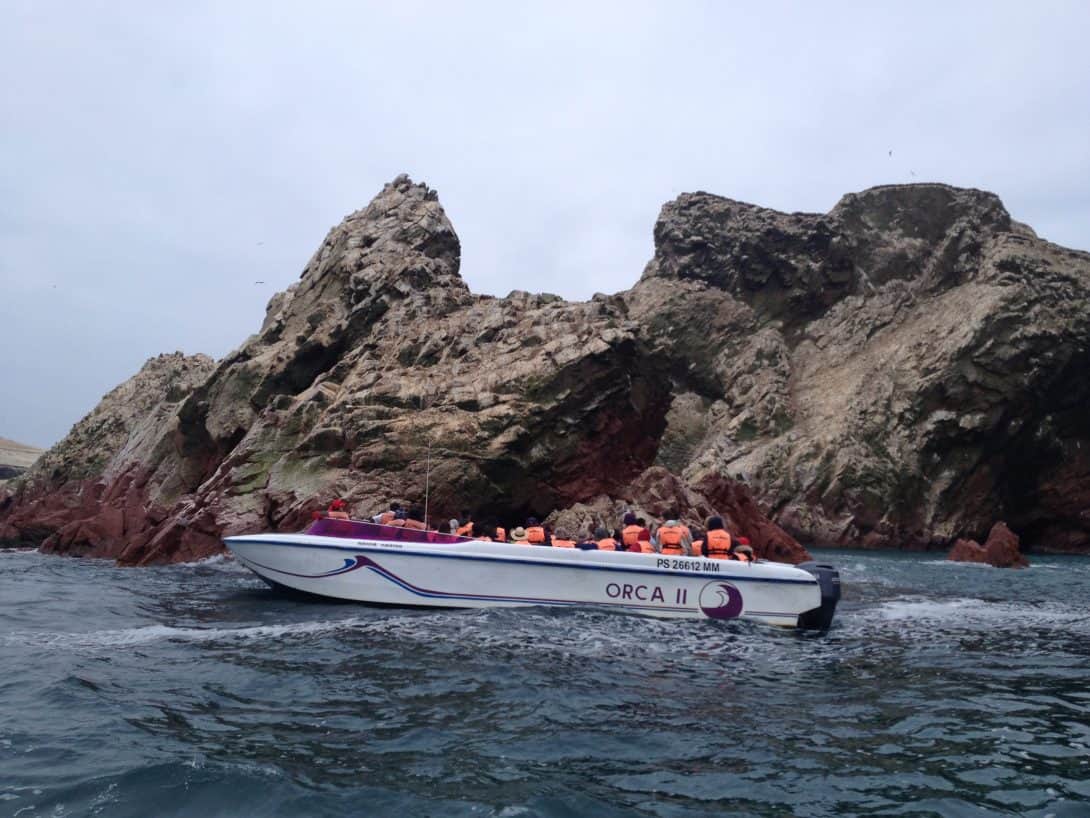
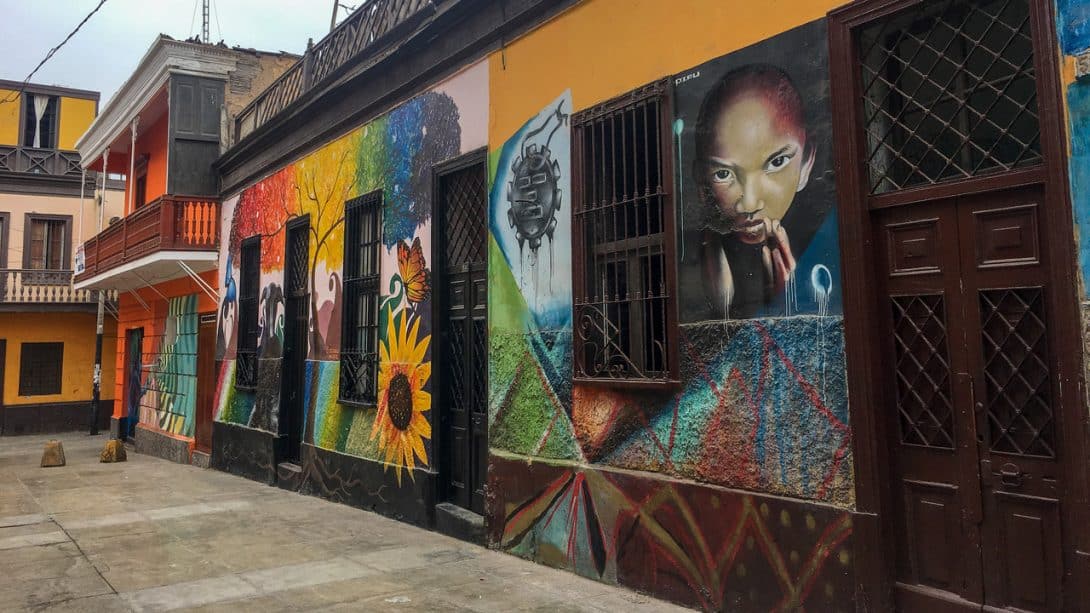
For history lovers…
If you’re looking for historical landmarks in Peru, look no further than Cusco. There are several archaeological sites and Inca ruins nearby, including in the area around the Sacred Valley.
Most of these can be explored independently without a guide but sometimes, it is worth splashing out to get the full picture of the site’s past.
For art enthusiasts…
No longer the dangerous and run-down city of the past, Lima is now a thriving metropolis. Districts such as Miraflores and Barranco have been completely revamped and now offer a haven for hipsters.
Barranco is home to a rich array of street art and attracts creatives from all over the country. There are a number of art museums in this area as well as bohemian-style cafes.
Miraflores is also a very polished area of the city where most backpackers choose to stay. In this area, Parque del Amor is the must-see location for art lovers.
For wildlife watchers…
Peru has plenty of spots for those who enjoy being in nature. Whether you’re gaping at a condor flying overhead or marvelling at pesky monkeys in the Amazon, there always some creature demanding your attention.
However, for the best wildlife in the smallest area, head to the Ballestas Islands from Paracas. Here you can see a whole manner of birds, including penguins, boobys, pelicans and cormorants, just to name a few!
For hedonism seekers…
If you like to party, don’t miss the desert oasis of Huacachina. This backpacker hotspot is filled with buzzing hostels and great bars, not to mention sand boarding and dune buggying!
We recommend spending your mornings chilling by the pool, your afternoons hurtling down the dunes and your evenings sipping Pisco Sours. What could be better?!
Check out this post for more amazing places to visit in Peru!
THINGS TO DO | Top 10 Things To Do in Peru
1. Hike to Machu Picchu



For travellers heading to Peru, a trip to one of the New Wonders of the World is something that cannot be missed. Although it is possible to get the train to Machu Picchu, there is nothing quite like watching the clouds part to reveal the Inca citadel after a long hike.
There are several ways to reach Machu Picchu, from the classic Inca trail to the lesser-hiked Lares trek. Even though you don’t need to be crazy fit to do most of these trails, it is worth making this one of your last stops in Peru to allow yourself to acclimatise and build your fitness up first!
2. Cruise down the Amazon on a River Cruise

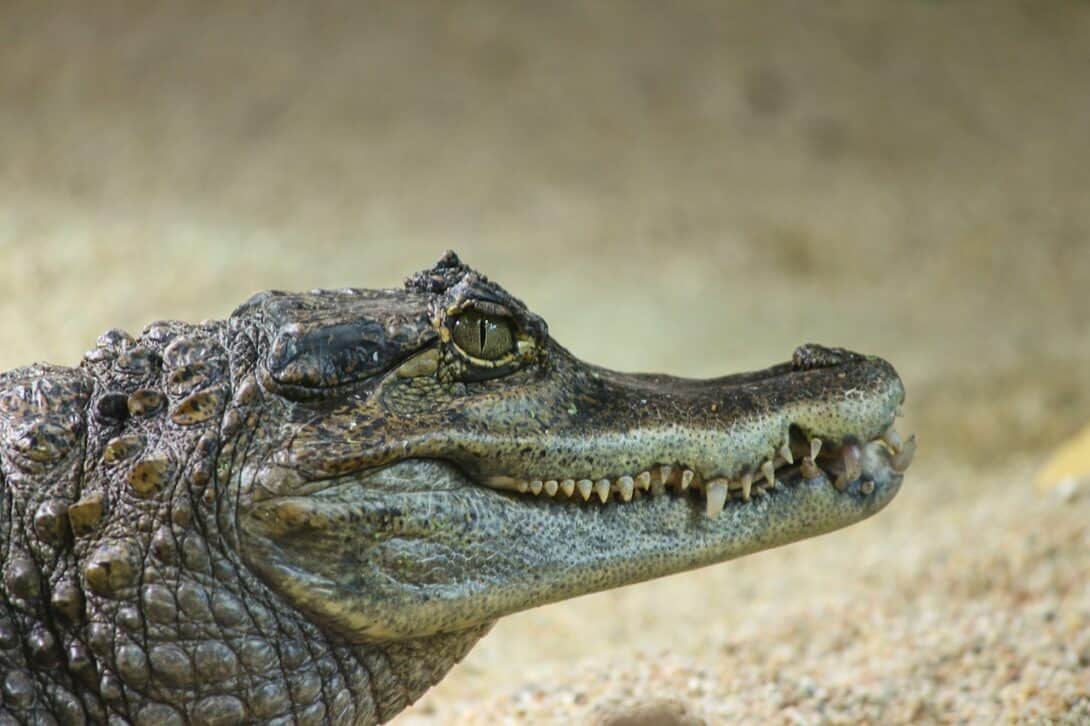

While you’re in Peru, make sure you visit one of South America’s best national parks to experience the Amazon. Manu National Park is located in Southeastern Peru and is a hub of biodiversity.
Arguably the best way to explore this jungle is via the waterways. Keep an eye out for caimans, capybaras, monkeys and even jaguars in the foliage. Eeek!
3. Fly over the Nasca Lines
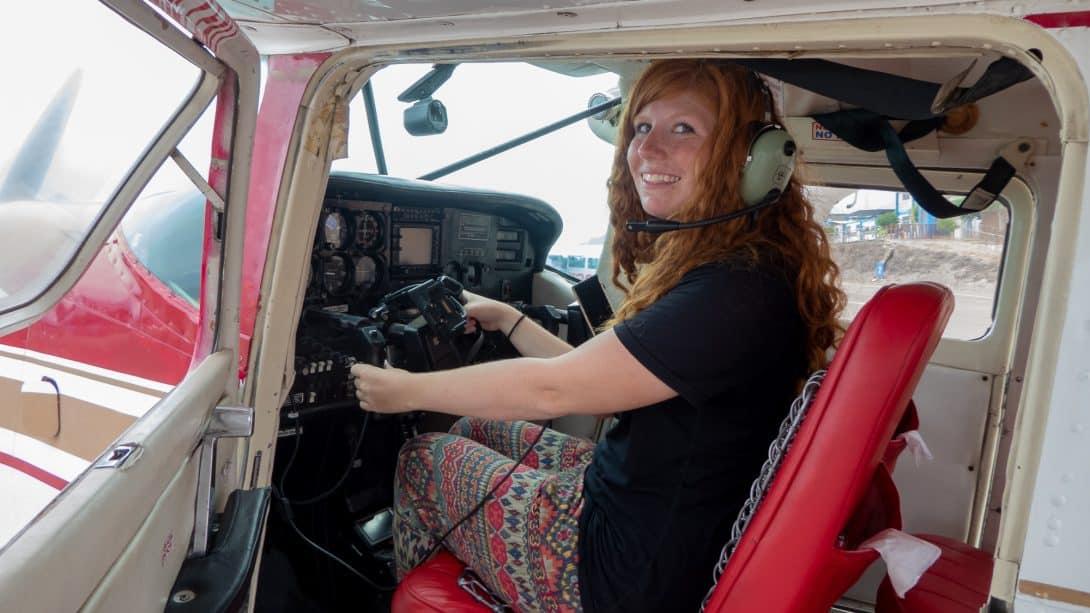


Are they a mapping system for extraterrestrials or just a few pretty patterns designed to act as a kind of observatory? Who knows.
No matter what you think these ancient geoglyphs were created for, there is no doubt that the Nasca Lines are one of Peru’s must see attractions.. For the best experience, hop in one of the small planes to take in the views from the skies — we promise you it’ll be worth it!
4. Visit the Alternative Rainbow Mountain



The Mountain of Colours lures thousands of visitors every year and for good reason – the scenery is breathtaking! But, hoards of tourists can put a dampener on the experience…
To skip the bulk of the crowds, check out Palccoyo, sometimes dubbed as the alternative Rainbow Mountain. Here you’ll get to see the ‘Red Valley’ and not one, but three rainbow mountains.
Also read: Vinicunca vs. Palcoyo – Which is Best?
5. Haggle for an Alpaca Jumper

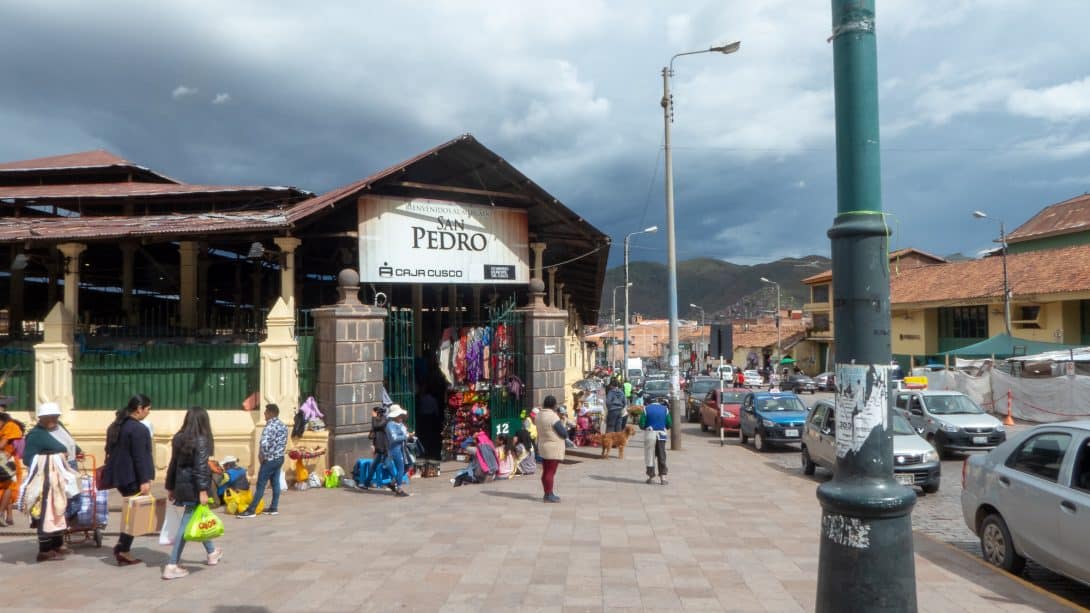

Forget the elephant pants, it is the famous alpaca jumper which is the staple mark of the backpacker in South America. After all, did you even go to Peru if you didn’t haggle for an alpaca jumper on Pisac market?
At markets, a lot of the locals see westerners coming and immediately whack 20 or 30% onto the price. Haggle, but do it responsibly. Remember that although you might be a ‘poor backpacker,’ in comparison to a lot of Peruvians, you’ve got a lot of money. Don’t be selfish when haggling.
6. Swim with Sea Lions at Palomino Island
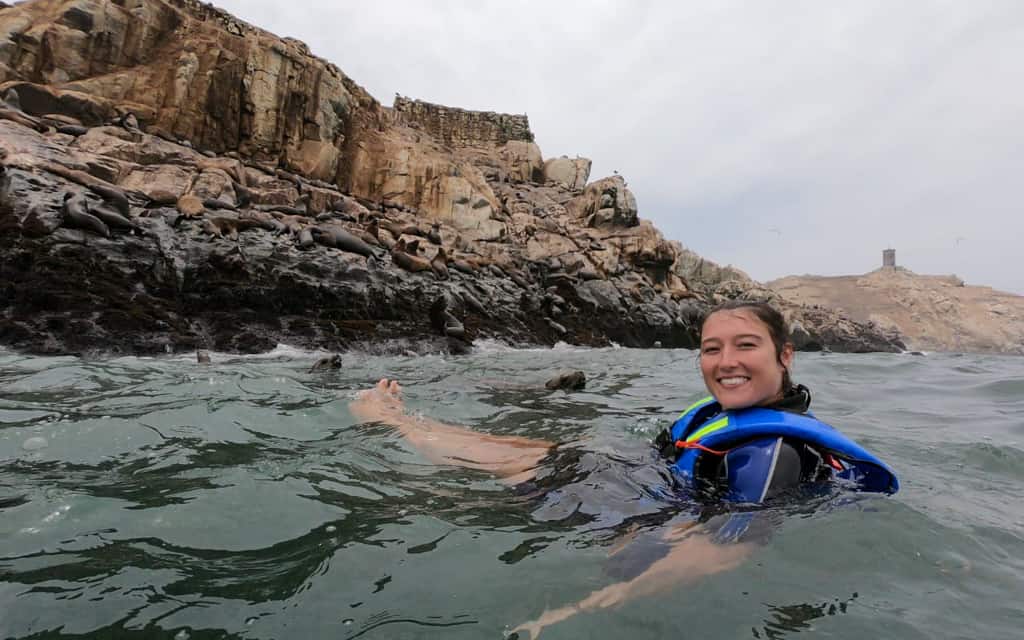


Animal lovers won’t want to miss the chance to swim with the sea lions at Palomino Island. This spot, also known as the ‘Little Galapagos of Lima’ is a great choice for those looking for a fun day trip from Peru’s capital.
When visiting, make sure you don’t crowd the animals and allow them to come to you. Also, do your research when choosing a tour provider and don’t go with anybody who encourages unethical practices.
7. Spot Condors at Colca Canyon



Colca Canyon is home to the Andean condor, one of the largest flying birds in the world. Although the main appeal of this area is the incredible hiking it offers, you will not regret the time spent trying to catch a glimpse of this mighty bird in the wild. Don’t forget your camera!
Check otu this post for more incredible South American animals!
8. Explore the Uros Islands



Lake Titicaca is the highest navigable lake in the entire world and is famous for its man-made islands made from totora reeds. These floating islands are home to a group of locals who have shunned 21st century living for a more traditional life.
To fully experience these islands, we recommend staying overnight on Amantaní, a lesser-visited spot than the well-known Uros. Spending a bit longer exploring the lake will give you a real feel for life on these islands.
9. Sandboard in Huacachina



For a dose of adrenaline, head to Peru’s adventure capital. Huacachina is a small desert oasis, famous for its extreme sand sports. Backpackers can try their skills at sandboarding and sand skiing on cheap group trips which are easy to arrange from town. After you’re all boarded out, cool off at one of the many lake-side bars.
10. Eat all of the Food at a Peruvian Cooking Class



Learn the history of ceviche (Peru’s national dish) and how to make it in a Peruvian cooking class! When a country is as famous for its cuisine as Peru is, it’s no wonder that there are cooking schools on every city corner.
Sign up for a class to master some of the classic Peruvian dishes, such as Lomo Saltado, Papa a la Huancaina and Ají de Gallina. We guarantee that with a few of these under your belt, you’ll be hosting the dinner parties for the foreseeable!
Do you have any more questions about Peru? Contact us by email, leave a comment below or ask away in the South America Backpacker Facebook Community!
Written by: Sheree Hooker and Dan Hall.